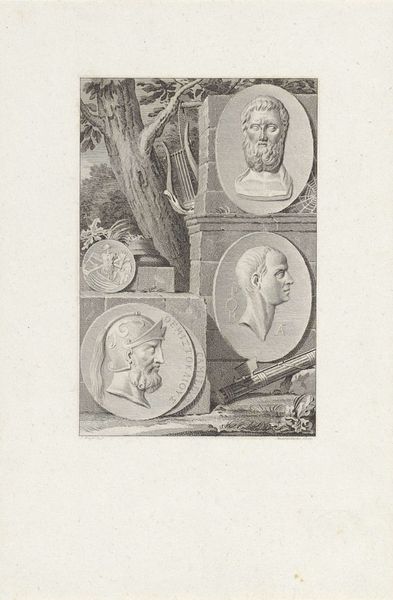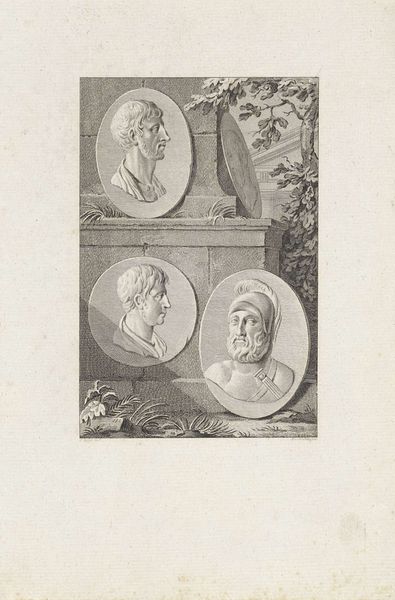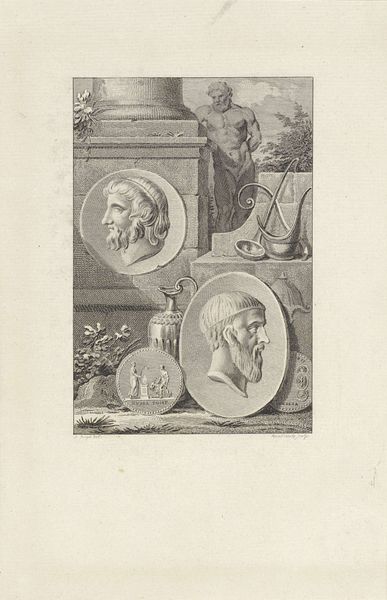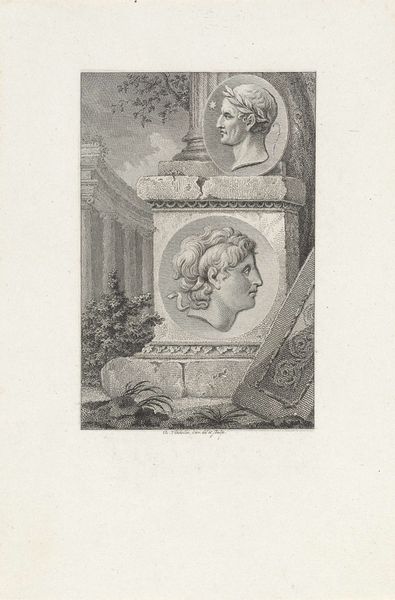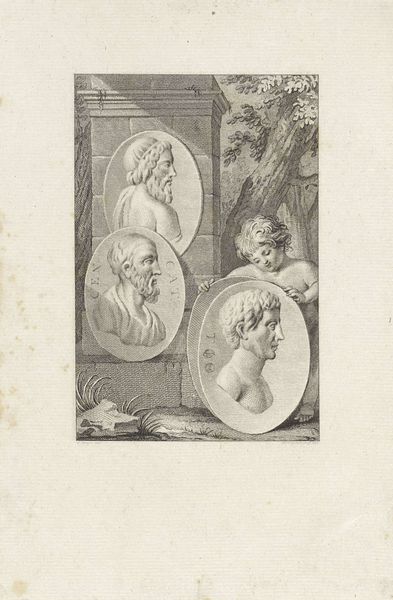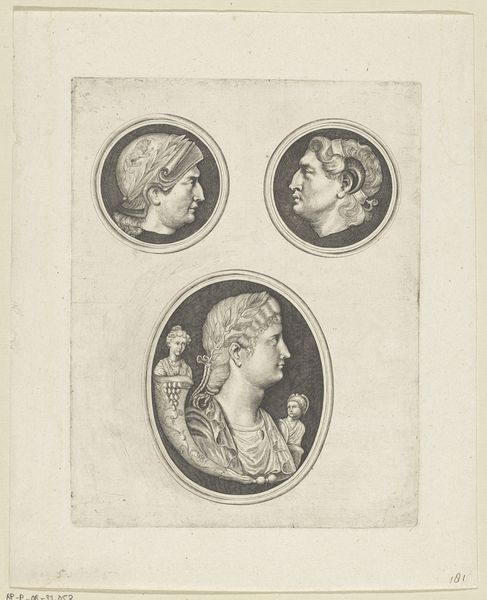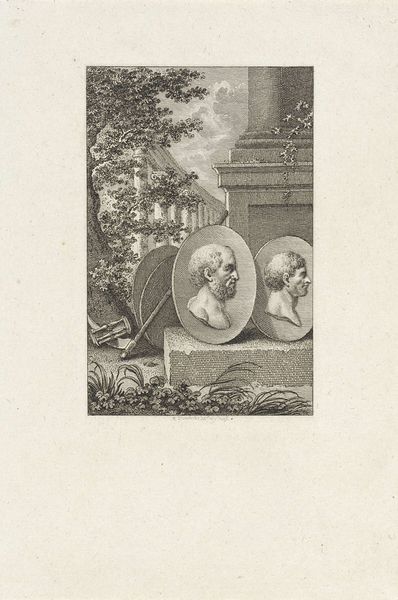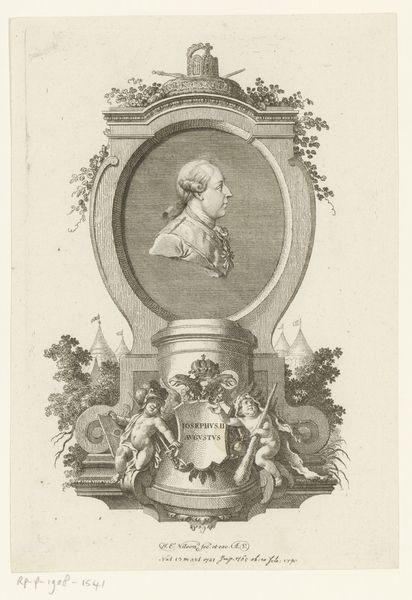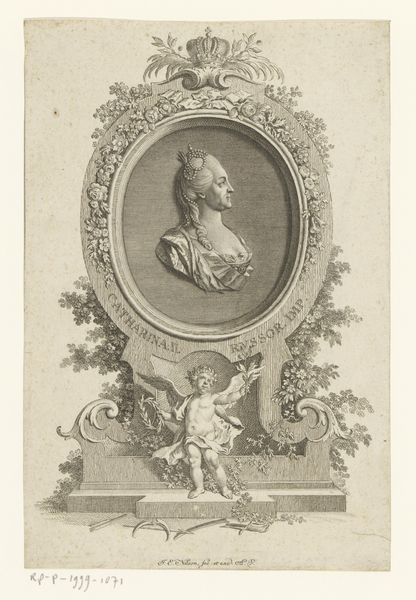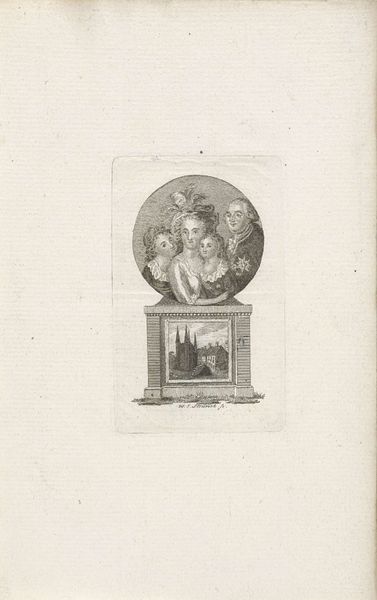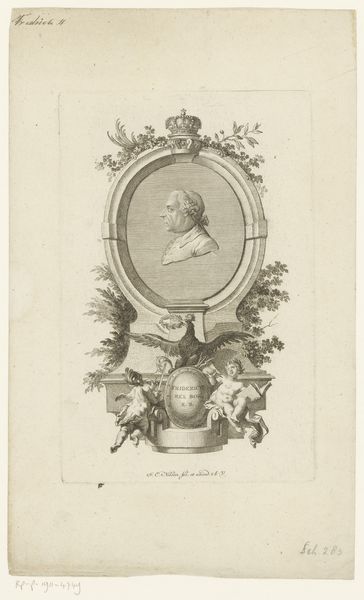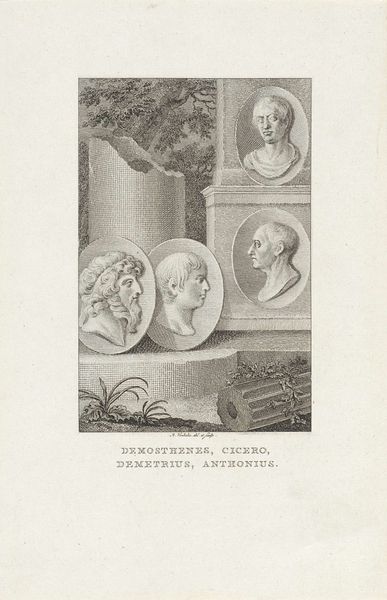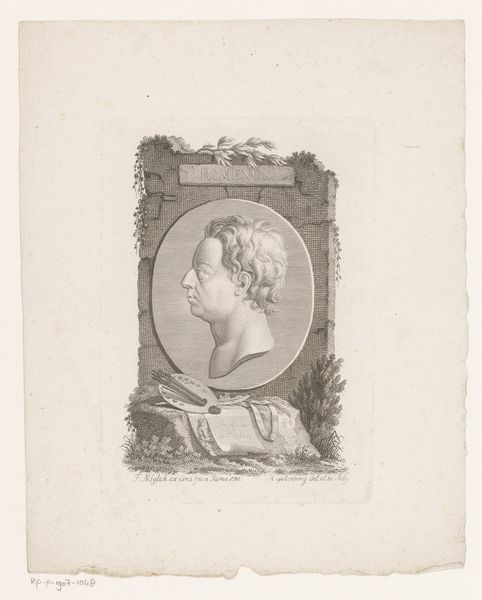
print, engraving
# print
#
old engraving style
#
classical-realism
#
classicism
#
history-painting
#
academic-art
#
engraving
Dimensions: height 235 mm, width 158 mm
Copyright: Rijks Museum: Open Domain
Editor: This is "Medaillons met portretten van Pyrrhus, Gaius Marius, Sulla," an engraving by Reinier Vinkeles from 1789. It’s striking how these strong, masculine figures are presented almost as decorative objects. How should we interpret that, especially within its historical context? Curator: That’s a very insightful observation. Let's unpack this. The portraits, rendered in the classicizing style of the late 18th century, harken back to antiquity but they are also a statement of power. Consider that the enlightenment was in full bloom and revolutions were happening; What do you think about placing representations of powerful, masculine, historical figures alongside those radical societal transformations? Editor: Hmm, the engraving seems to monumentalize these figures while also domesticating them, turning them into art objects. The act of portraying them in this way—does it legitimize or critique them, given that these men were associated with political turbulence? Curator: It’s a complex relationship, isn't it? There's a visual conversation about leadership and authority, especially when seen through the lens of the late 18th century's political upheavals. This almost serves as a form of political commentary, though coded in a language that only those of the intellectual elite of the day could translate. But perhaps these classical figures provided templates for new models of civic virtue or warnings about excesses of ambition. Who does history say they were? Editor: History says these men rose to power, often through brutal means. Pyrrhus was a warrior king, Marius a military reformer, and Sulla a dictator. Representing them risks glorifying their dominance but they seem almost reduced. Curator: Precisely, that tension is what makes the engraving so compelling. Think about how contemporary society continues to grapple with the legacies of powerful and problematic historical figures. How should their stories be told and how much visual cultural do they require or merit? The very act of commemoration is not a neutral endeavor. The engraving urges us to constantly re-evaluate power dynamics in light of the socio-political climate of both the depicted subjects and those who actively choose to depict. Editor: This definitely gives me a richer perspective of what’s being depicted and represented. I’ll think about what kind of social critique we are offering with contemporary curatorial interpretations. Curator: Wonderful! Art really helps us see more and ask how we feel about that perspective.
Comments
No comments
Be the first to comment and join the conversation on the ultimate creative platform.
